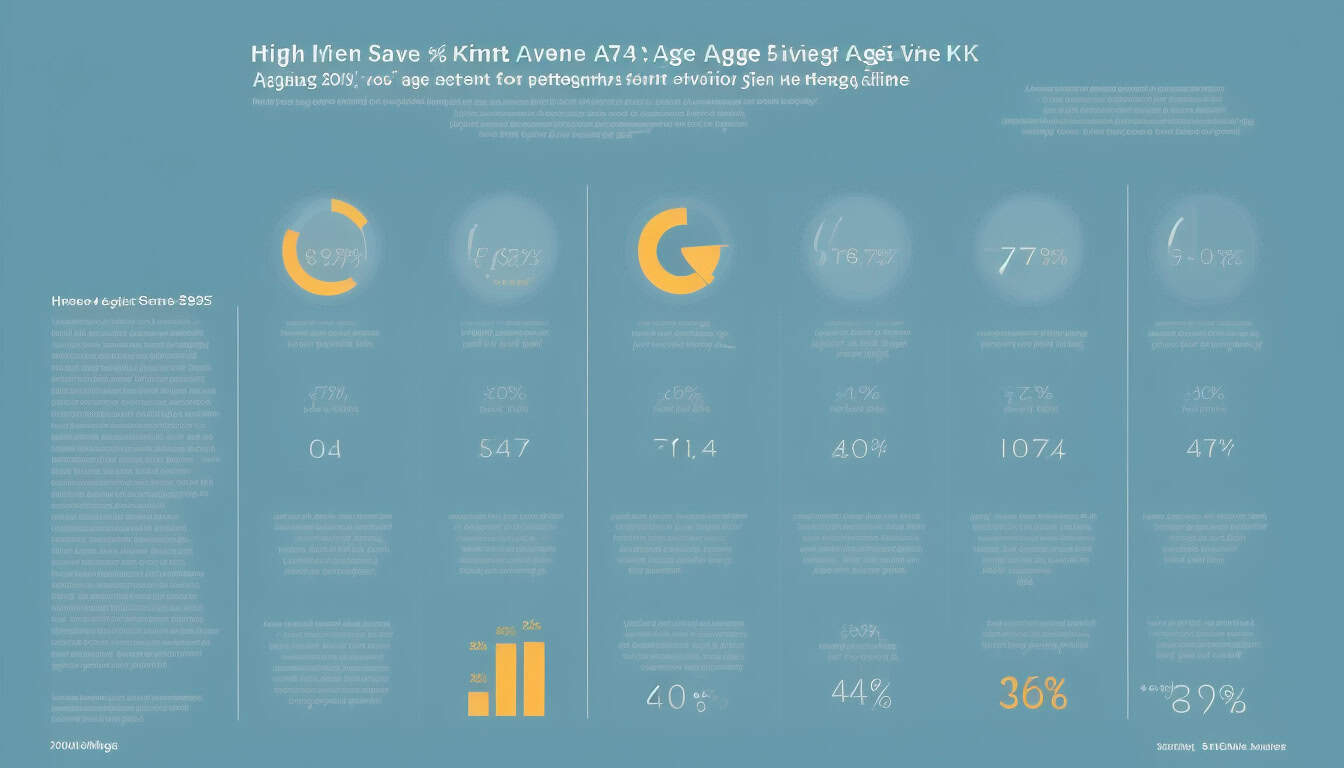Each year, Vanguard releases a report titled How America Saves. This report offers a detailed look at how Americans invest for retirement, focusing on employer-sponsored plans like 401(k)s. The insights reveal how people manage their retirement savings across different age groups. These data help us understand our own positions and find ways to improve our financial futures.
Let’s start by looking at why tax-advantaged accounts like 401(k)s matter. Whether you use a traditional 401(k) that defers taxes until withdrawal or a Roth account offering tax-free growth, these accounts serve as key tools. They create opportunities to build wealth for retirement by reducing your tax burden and letting your money grow. Knowing how savings change with age can guide your decisions and push you towards financial independence.
The report breaks down average and median 401(k) balances by age. For those under 25, the median balance stands around $33,000. People aged 25 to 34 have a median of about $155,000. The numbers drop for the 35 to 44 group to around $36,000, then rise to $61,000 for people aged 45 to 54. For those between 55 and 64, the median balance hits approximately $88,000, and older individuals aged 65+ show similar figures.
These numbers tell an interesting story. The average balances tend to be higher than the median because outliers with very large accounts skew the data. Median balances provide a clearer image of the typical saver. Both should influence your outlook. Medians show the middle ground, while averages give a sense of what the most successful savers accomplish. This dual view helps you set more ambitious goals without losing touch with what most people experience.
The most dedicated investors, sometimes called “super savers,” tend to push not only towards typical balances but beyond them. Their passion and discipline often lead them to build bigger financial cushions. These cushions can offer options, such as retiring early or achieving financial independence sooner. Building a cushion requires more than steady contribution; it depends heavily on income and time spent in the workforce.
Income plays an outsized role. Higher earnings make it easier to save more in raw dollars. The report finds that both median and average savings move alongside income levels. But having a higher income doesn’t automatically mean you save more. If your income grows, you must consciously decide to boost your savings rate rather than keeping it the same as when you earned less. Without this step, you risk falling behind where you should be by mid-career.
A common question arises: How do you know if you are on track? Rather than fixate solely on medians and averages, it helps to set personal targets. A typical guideline suggests having saved one time your annual income by age 30, three times by 40, six times by 50, and between eight and ten times by retirement. These milestones can steer your saving efforts through your career.
Starting early and staying consistent remain the best ways to build wealth. Compound growth rewards time in the market. The earlier you put money away and keep doing it, the easier it becomes for your balance to grow exponentially. If you delay, catching up later becomes difficult and stressful.
Of course, these general targets assume stable, steady income growth. People who receive big salary jumps later may find themselves behind these benchmarks. They may worry unnecessarily. Yet, higher income provides an opportunity to accelerate savings to make up lost ground. If you plan early retirement, you might need to save more aggressively. Conversely, if you want to retire later, a slower, steadier pace can work.
Generations shine a light on changing saving habits. Younger groups like Gen Z have a savings rate of about 7.2%. Millennials save around 8.6%. Gen X steps up to approximately 10.2%, while baby boomers reach nearly 11.8%. Employer matching helps these numbers. Many employers match around 4% of contributions. Including these matches, some people save between 10 and 15% of their income regularly. Professional advice often points to saving between 15 and 20% to prepare well for retirement.
For those just starting in their 20s or 30s, the exact percentage of savings matters less than simply starting. Income at this stage might not allow for big contributions. Saving something, no matter how small, builds the habit and lays a foundation. Over time, aim to increase your savings by one percent each year until you reach your goal. Make sure to capture any employer match. It’s free money and boosts your balance faster.
As incomes rise, resist the urge to inflate your lifestyle too quickly. Try to increase investments alongside lifestyle improvements. This balance is key for maintaining upward momentum in your savings.
By your 40s, you should strive for a savings rate between 15 and 20%. This decade demands reviewing your progress to ensure retirement readiness. Small adjustments at this point can prevent big problems later. Your 401(k) contribution limits at this stage allow up to $23,500 annually in 2025. Maximizing contributions can speed up your journey toward your goals.
People in their 50s get a valuable boost called catch-up contributions. An extra $7,500 can be added to the standard limit, bringing the total to $31,000 per year. If possible, taking full advantage of this limit can help those who feel behind to close gaps quickly. The 50s are often the crucial period for finalizing retirement plans and building a clear withdrawal strategy.
Considering your 401(k) savings through the lens of your age can help you make the best decisions for your future. Whether you are starting your career or approaching retirement, understanding how typical savings grow and what benchmarks experts recommend can guide your efforts. The key is beginning early, increasing savings as income grows, and adjusting your goals based on your circumstances.
In 2025, keeping pace with these savings milestones puts you in position to secure a more comfortable retirement. Whether that means retiring early, working a few extra years, or simply enjoying financial freedom, taking control of your 401(k) matters. Make your money work harder by acting thoughtfully now, using the lessons from data and the power of consistent saving.
Your retirement story depends on the decisions you make today. Tracking your progress by age and income helps you stay motivated. Watching your savings grow shows the value of your discipline and courage. With steady effort, your 401(k) can become a powerful tool, helping you build the financial future you want.
#financialnews #moneytips #personalfinance #financialfreedom #financialindependence #stockmarketnews #stockmarketupdates #stockmarket2025 #usstockmarket #investingnews #investmenttips #retirementplanning #retireearly #earlyretirementtips #retirementinusa #socialsecuritynews
#socialsecuritybenefits #medicarenews #taxseason2025 #usstocks #taxplanningtips #taxnews2025
#usatarrifsnews #tariffimpact2025 #inflationnews #economicoutlook2025 #fedratehike #interestratenews
#401ktips #rothiraadvice #traditionalira #savingforretirement #moneynews2025 #currentfinancialnews
#usafinancialnews #personalfinanceusa #inflation2025 #usataxes2025 #taxstrategies #debtfreejourney
#moneygoals2025 #investsmart #wallstreetnews #retirewealthy #sidehustleideas #financialliteracy2025
#buildwealth2025 #generationalwealthtips #stockmarketforbeginners #moneytalks2025 #economicnewsusa #retirementtravelguide






